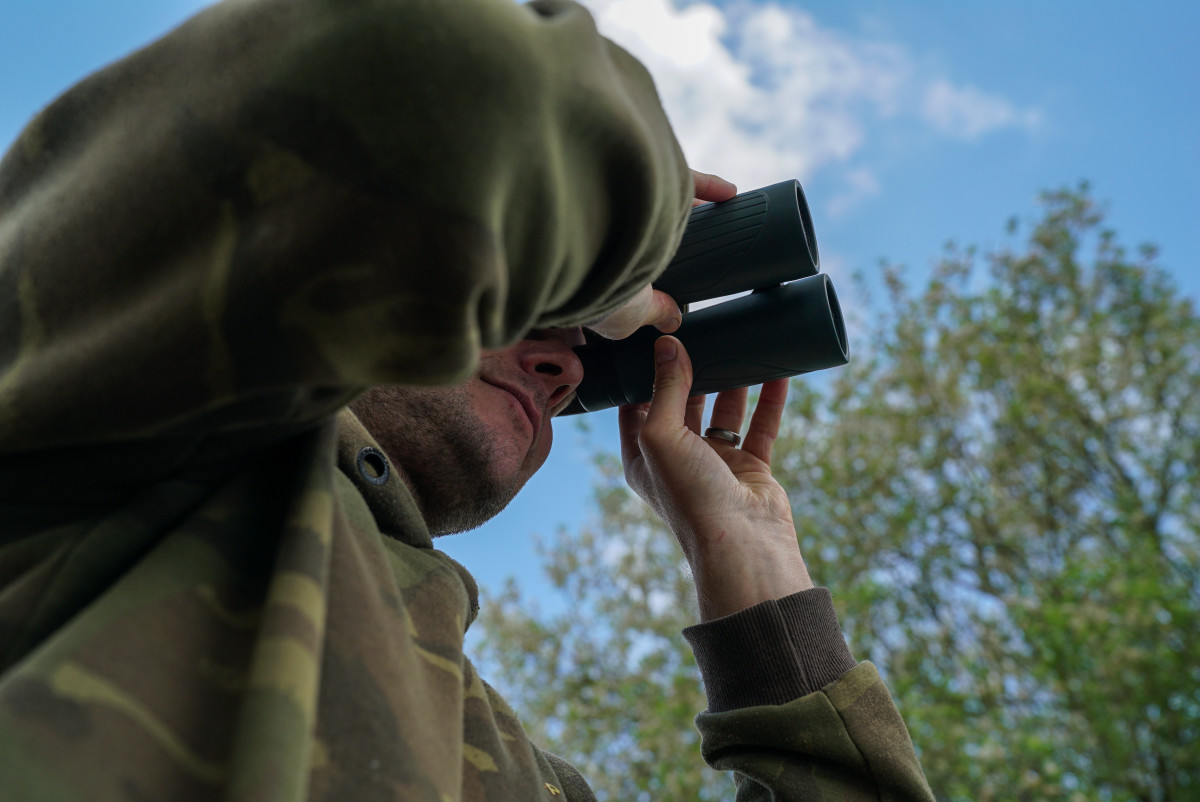
Watercraft: The Whys and the Wherefores
Kev Hewitt gives his take on what's probably the most crucial aspect of a carp angler's approach...
‘Watercraft’: a single, yet diverse word that means so many different things to anglers, but so little perhaps, to those that don’t fish. If you were to look up ‘watercraft’ in a carp dictionary, there simply wouldn’t be enough pages perhaps, to thoroughly explain its full meaning. Anglers who begin to understand watercraft, catch many fish… experts in watercraft still have a lot to learn however. Watercraft evolves from one year to the next on any given venue, and has a totally different set of variances on different waters.
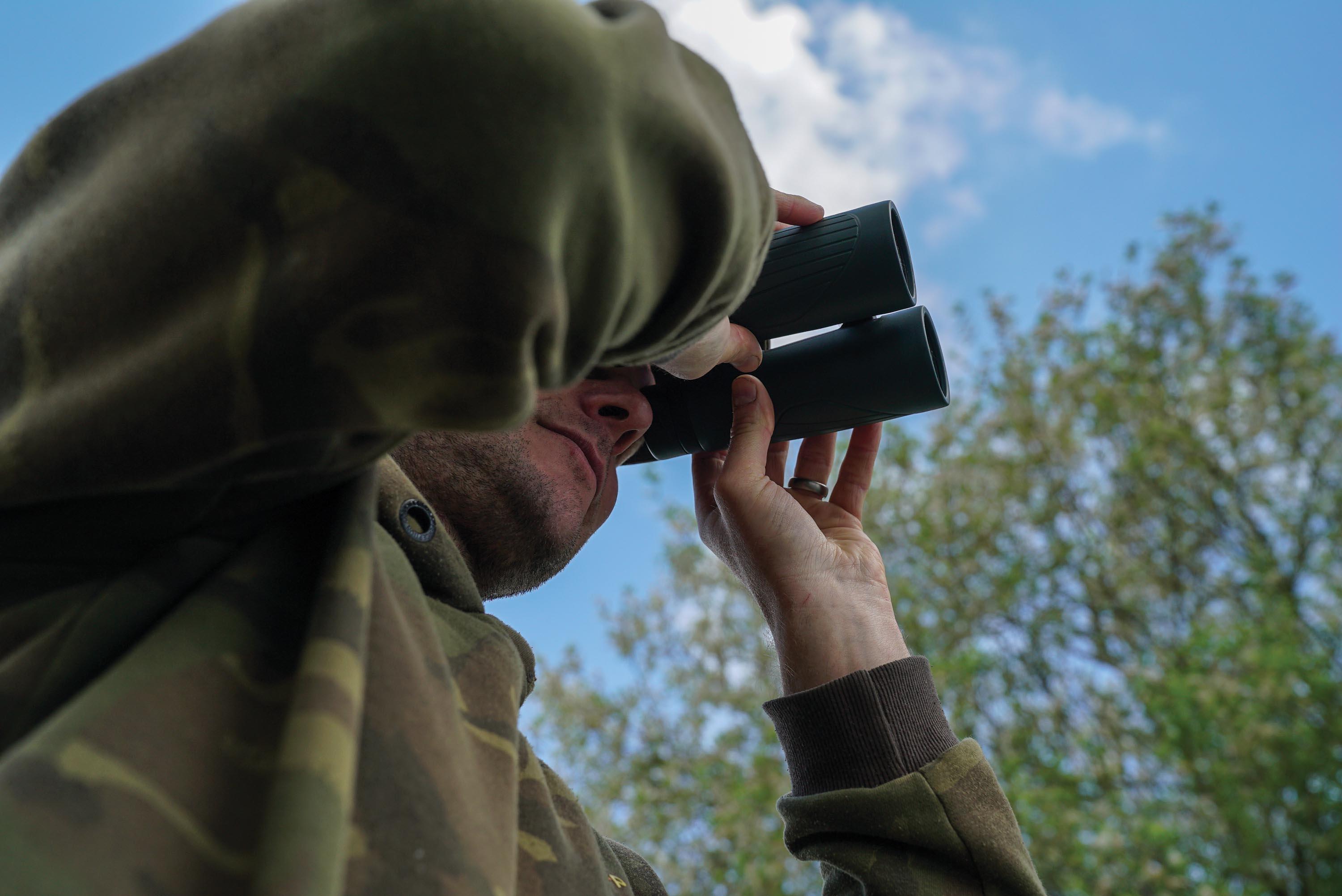
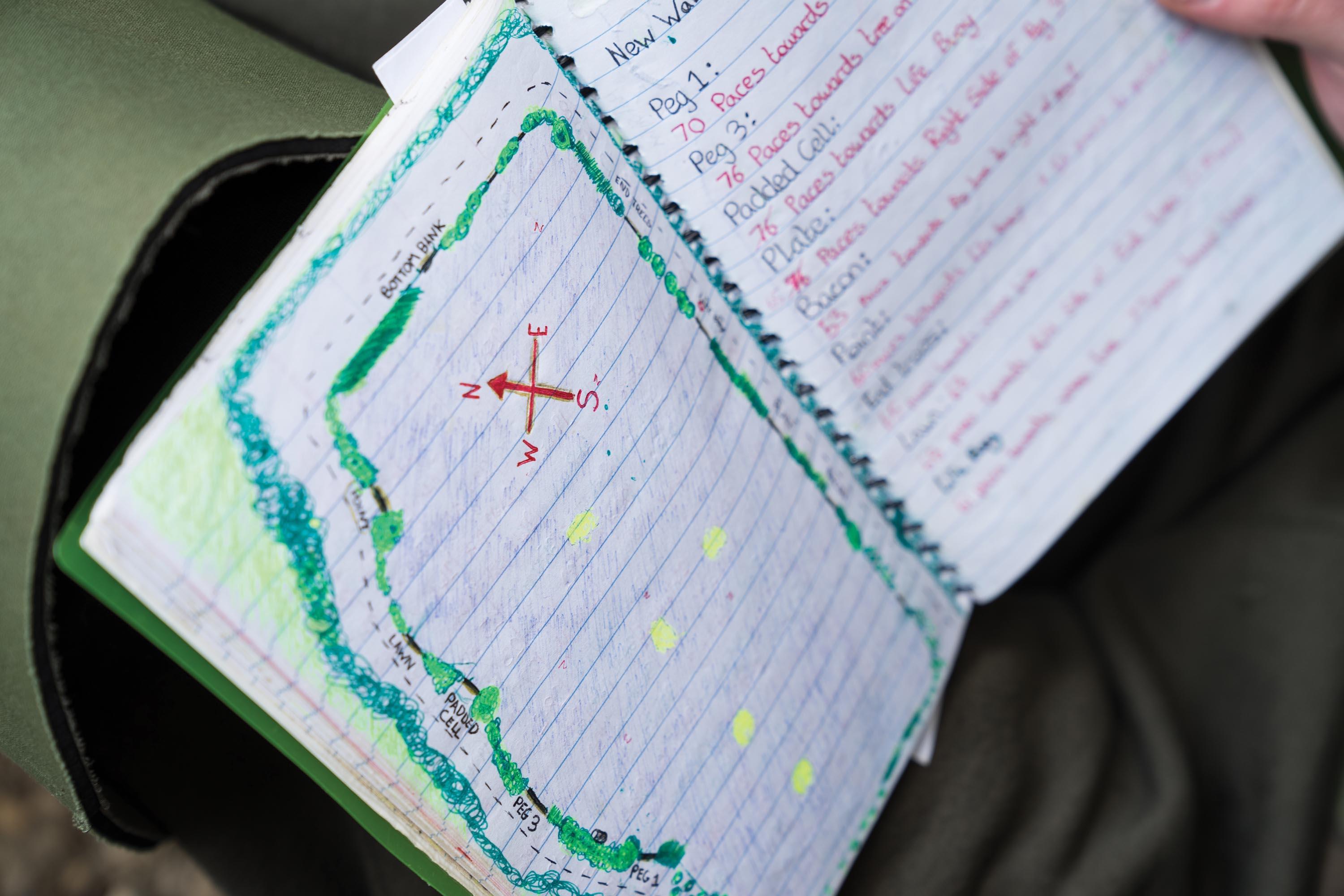
Fast-track
For now, I’m going to take a look at one small piece of the watercraft jigsaw and explain my process of feature finding, and more importantly, how to locate and hit the right spot. The style of angling I often adopt: ‘three on a spot’, relies very heavily on finding the right spot. When putting all of your eggs in one basket, you have to be sure that you find the right basket to start with. Fail at that first hurdle and a blank will, more than often than not, be on the cards.
The first time I fish a swim, I’ll spend a fair amount of time with a lead and marker set-up, building up a good picture of the depths, the weedy areas and most importantly, the clear spots. Nowadays, this process can be fast-tracked with the aid of a Deeper fish finder, which allows you to mark all the depths of a swim with pinpoint accuracy in just four or five casts. I have to admit, I’ve used one a few times in the depths of winter to quickly build up a picture of the contours of a lake. A lap of a water with a few casts in each swim, will certainly stand you in good stead as far as that venue goes. I very rarely, if ever though, use the Deeper again during the rest of the season.
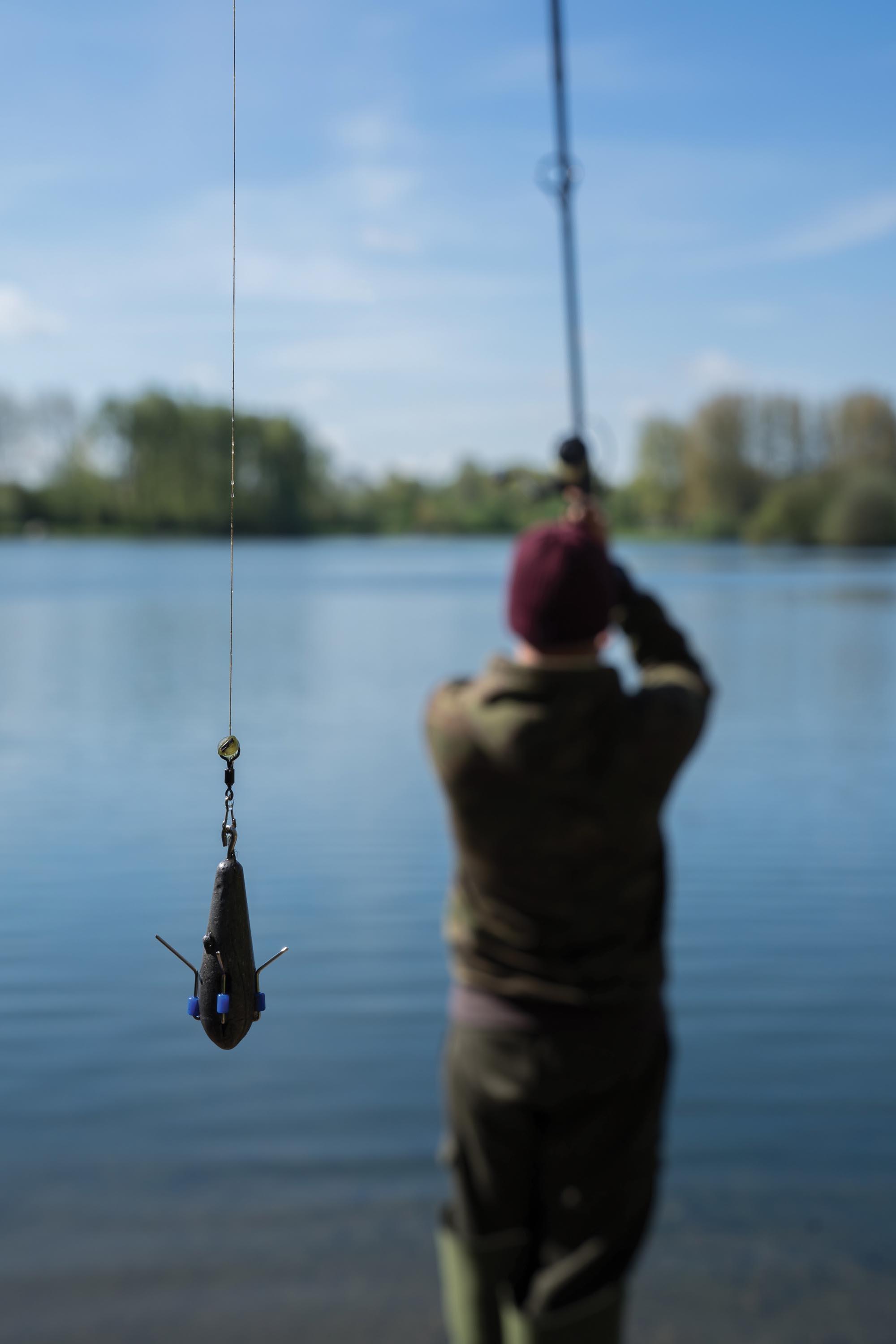
The dinner plate
Once set-up in a swim for the first time, I’ll cast around with a bare lead, looking for clearer, harder areas. I’ll normally do this of an afternoon, after the main bite time has passed, not wanting to ruin other anglers’ chances with my repeated casting. I’ll cast as many times as I need to, until I find what I feel is the perfect spot. I love fishing weedy waters, where it’s so much easier to locate spots where the fish have been feeding. Sometimes it might take me 100 casts to find a small, clear spot, or it’s a case of casting at the tallest tree on the horizon and the lead will go down with a ‘donk’.
Once I get a drop with a bare lead and using a braided main line, I’ll clip up and switch to a sea fishing gripper lead with the four prongs sticking out. Then I’ll re-cast to the same spot, lining it up with a far-bank marker. I’ll then drag the lead back slowly with the tip down; the less resistance I feel, the cleaner and harder the spot will be. If the lead meets with a solid resistance, then I know I’m in weed. Once the lead’s been dragged back a rod length or so, I’ll whip it up off the bottom and wind in quickly. With the lead out of the water, I’ll inspect the prongs to see if there’s any weed, debris or even bloodworm on them. In an ideal scenario, I’m always looking for a hard drop and a very clean smooth drag back - especially if the spot’s surrounded by weed, as this simply cries out ‘carp dinner plate’.
Once I’ve found that dinner plate, I’ll clip up and cast to the left and right, exploring the boundaries of the spot. I want to figure out which part of the spot gets the hardest drop, gives the cleanest drag back and how far to the left or right I can cast and still remain on the spot.
Sometimes there simply won’t be a perfect little clear, hard spot out there surrounded by weed, and on these occasions I try to find an area where the weed’s at its lightest and it’s least dense. By fishing particle baits over the top, it’s possible to get the fish to polish it off and create a new spot. Regular baiting will help, but the biggest challenge is to get them feeding in the first place and then to get that first bite. In my experience, the cleaner spots are far easier to get bites from to start with, but getting a spot polished off yourself can be far more satisfying.
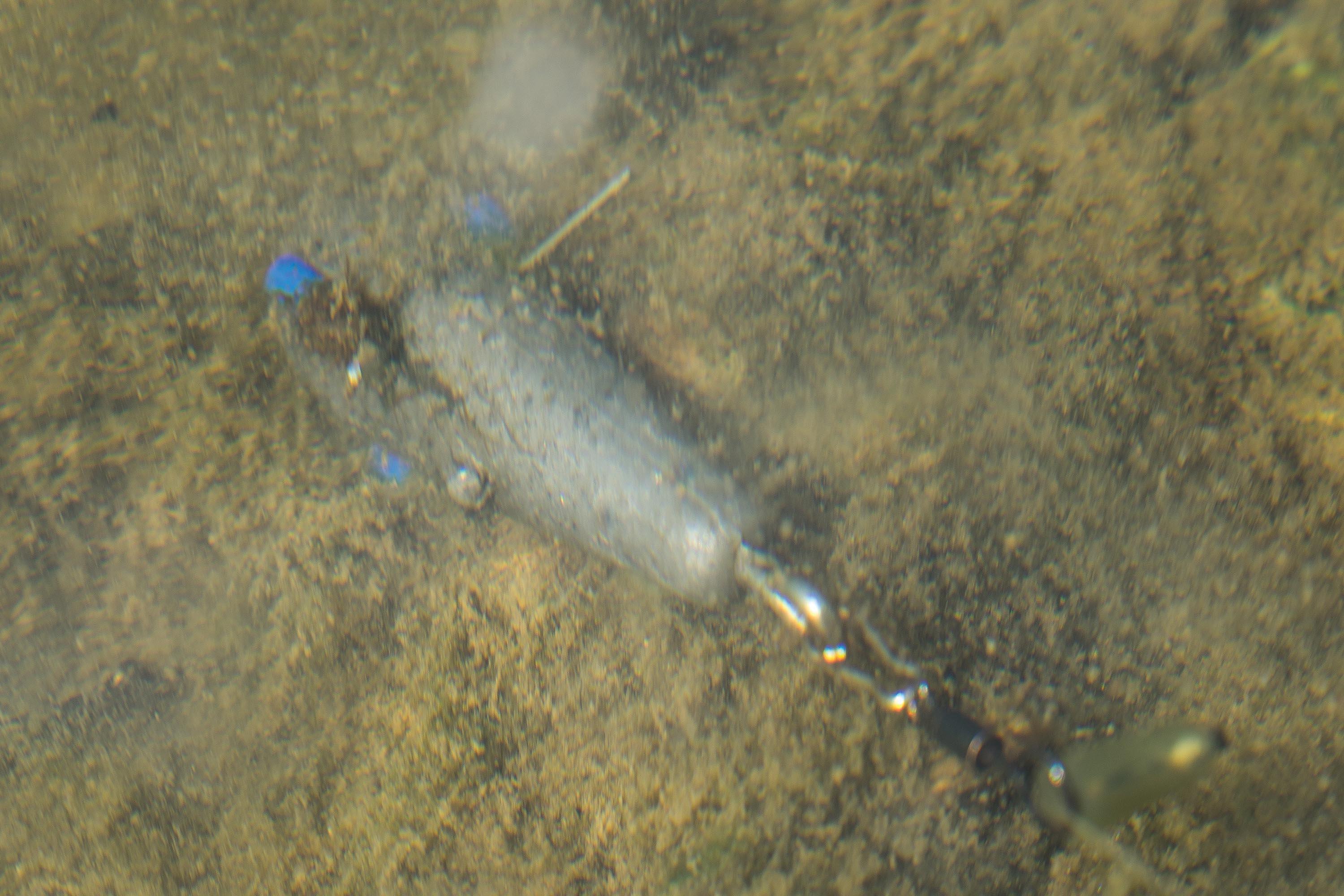
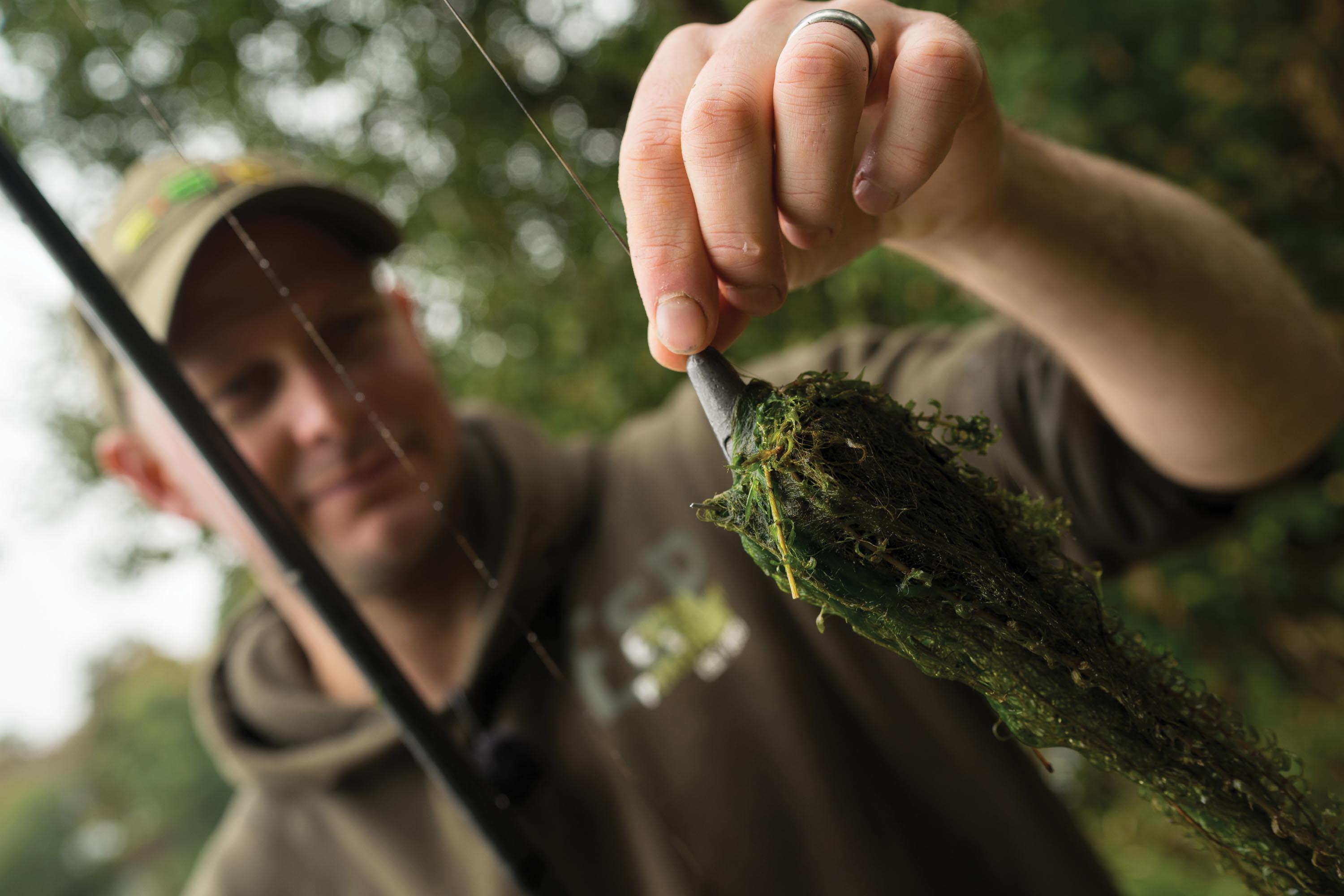
Marking up
Once I’ve found my chosen spot, I’ll use a far-bank marker for direction, before wrapping the line on my marker lead rod around wrap sticks to measure the exact distance. I then make a note in my carpy diary for future reference. It may take me 50 casts on that first trip, but once mapped out and noted in the diary, life’s much simpler on future sessions.
The next thing to consider is the distance at which the spod rod’s to be clipped up compared to the fishing rods, and I use a fairly simple equation. My fishing rods are clipped up at exactly the same distance as my marker rod. Then I clip up my spod rod shorter than my fishing rods, the exact difference being dependent on the depth, allowing for the fact that my rigs will swing back towards me as they fall through the water on a tight line. The equation is simple: for every two feet of depth, I clip up my spod rod one foot shorter than my fishing rods. If I were say, fishing at 20 wraps and it was 14ft deep, I’d clip up my spod rod 7ft shorter than my rigs.
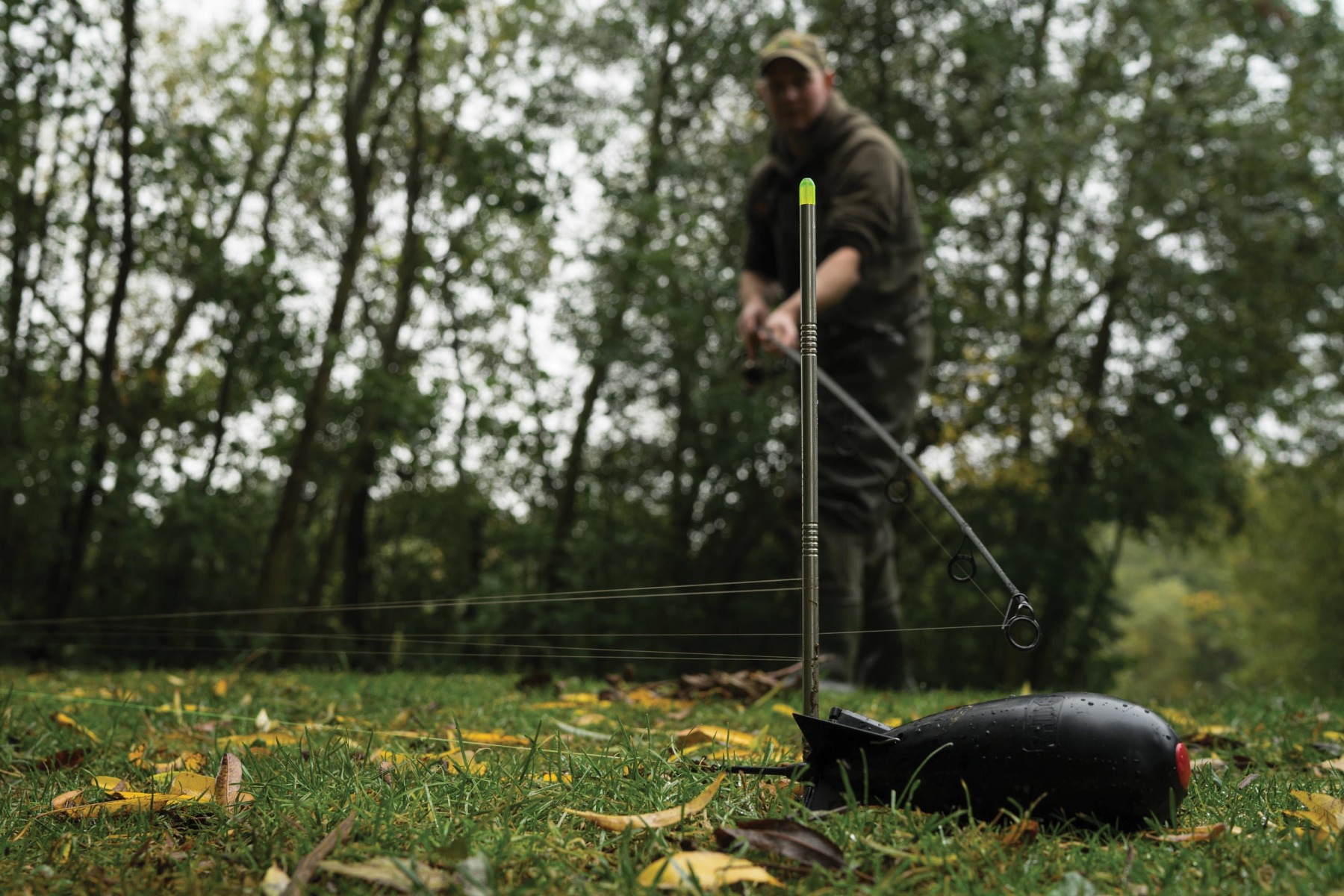
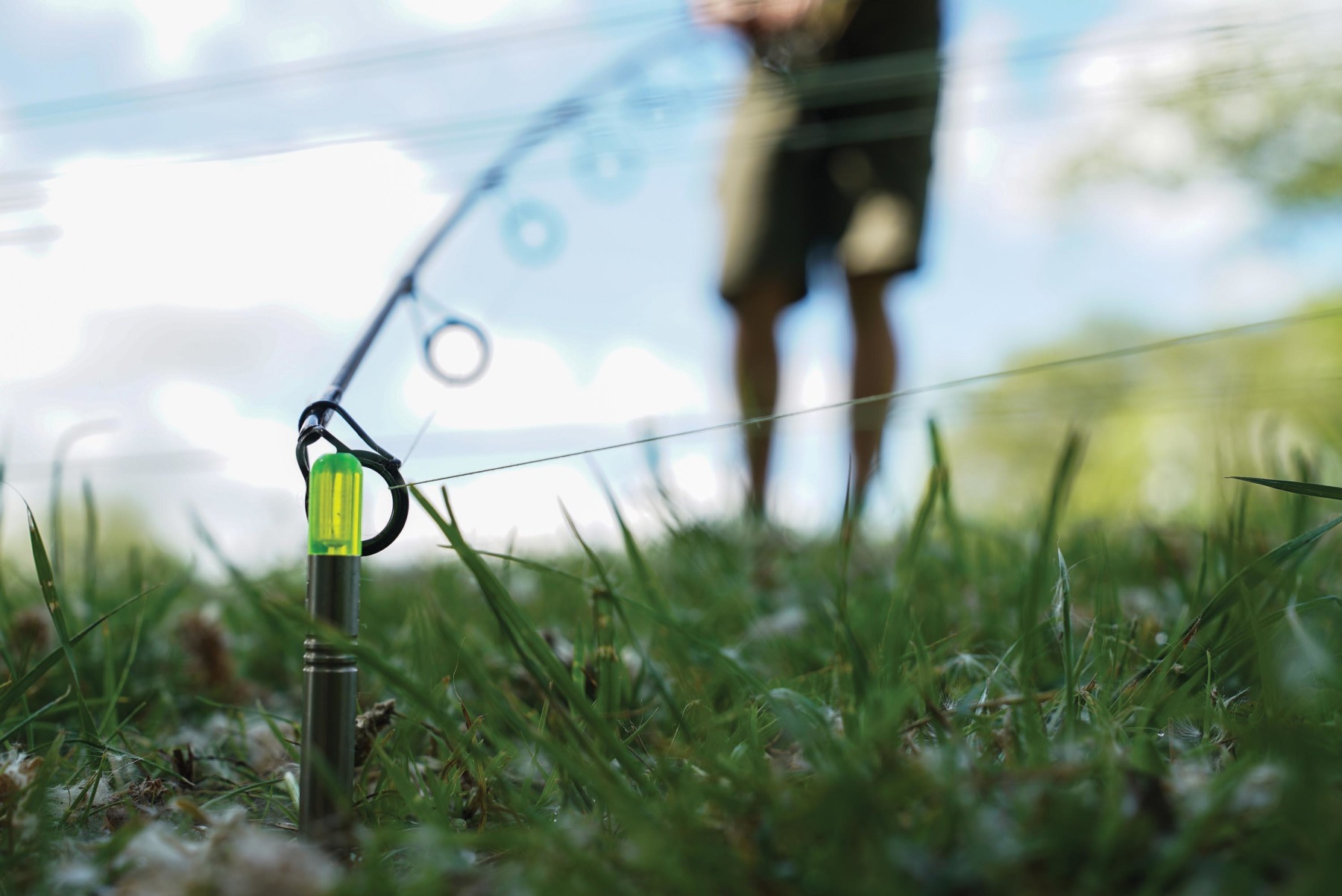
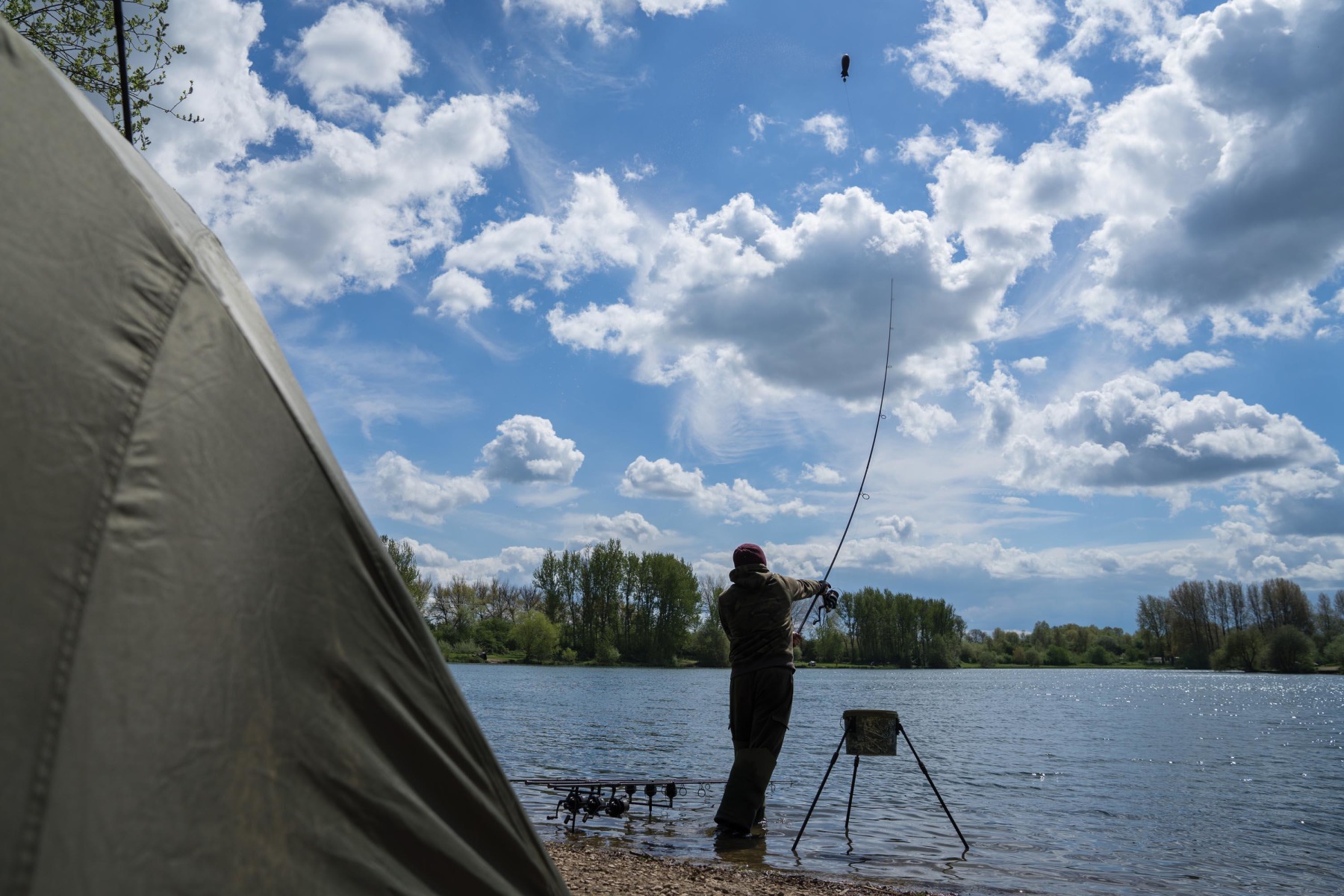
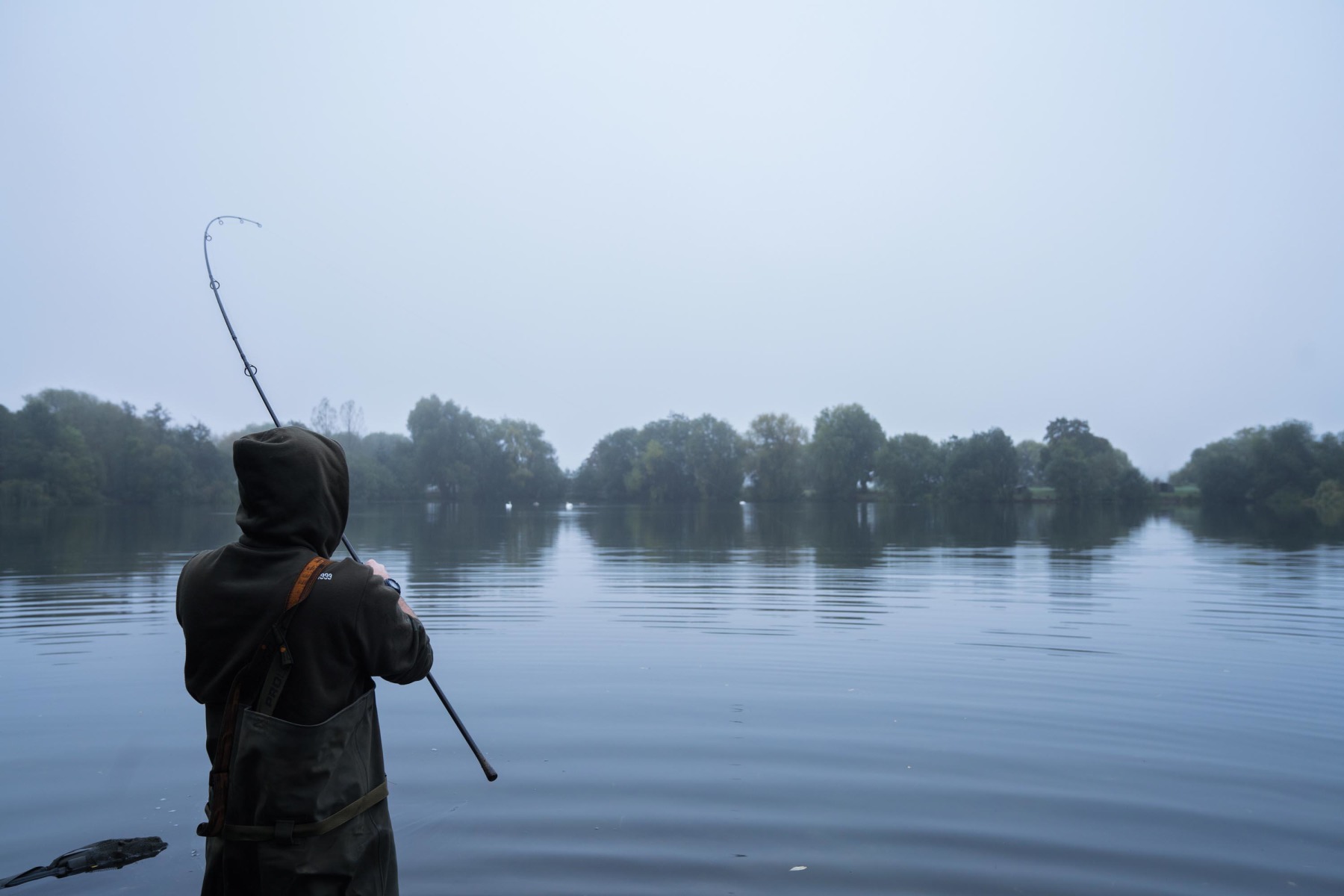
Time to bait
So I’ve found a lovely little clear area and all my rods are clipped up. If I feel confident that I’m on fish and that they’re up for some grub, I’ll introduce anywhere between three, and six kilos of particles - usually made up of hemp, sweetcorn and 10mm Live System. I like to give them a level of bait that instigates competitive feeding - a situation easily achieved with a higher density of stock, but also possible on low-stock venues.
Once I’ve baited and set my traps, I’ll top up only after I’ve had a bite… it really is a case of kicking back, sitting and waiting. I’m not a fan of the ‘little and often’ theory; I like to put a decent bed of bait down to start with and sit on it. If no bites are forthcoming, then I don’t put any more bait in. If I do get a bite or two, then I like to top up the swim with more bait, replacing what’s been eaten. I always want that spot to have bait on it, so whenever a carp comes along, there’ll always be enough there to temp it into feeding. In general, I tend to top up with around 10 Spombs after every fish, but sometimes I’ll put out more if I feel the conditions are right and a hit is on the cards. Conversely, I’ll put out less if I think that bite time is coming to an end and I feel there’s a chance of nicking another quick bite. Watercraft and intuition will tell you how much to top up by, and this comes from putting the time and effort in and from learning from every single trip.
There’s nothing instant about carp fishing; things can only be learned over time from putting in the work and by experimenting. Once you feel you know all you can about a venue, it’s time to head for pastures new to begin the whole learning experience again from scratch… the more times you repeat this process, the easier it becomes.




